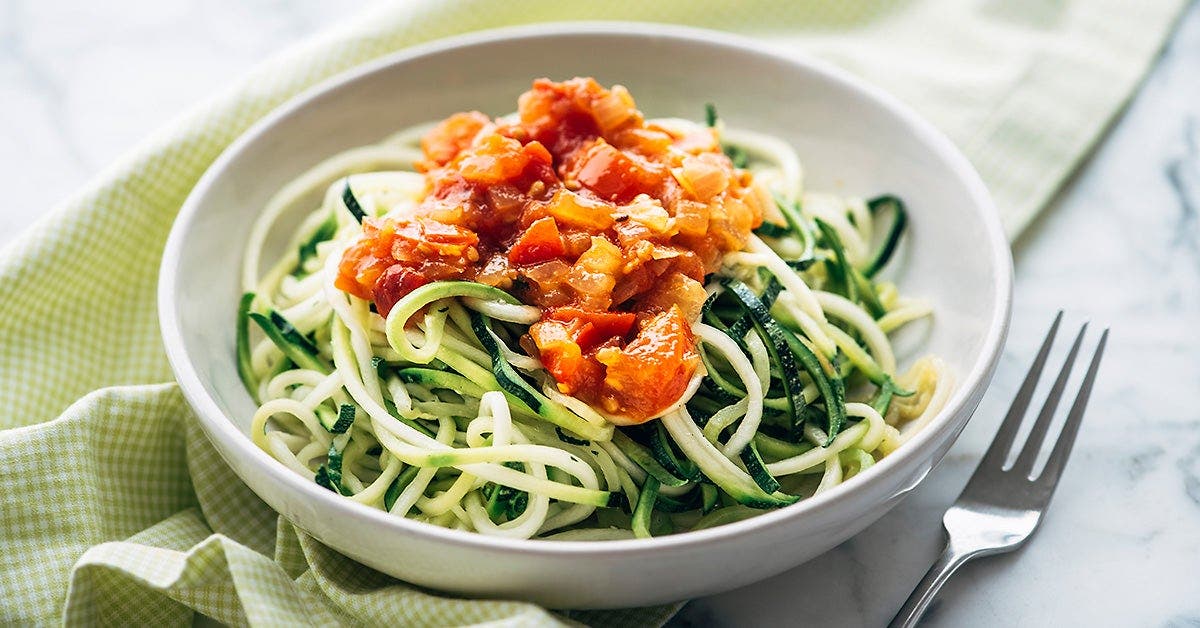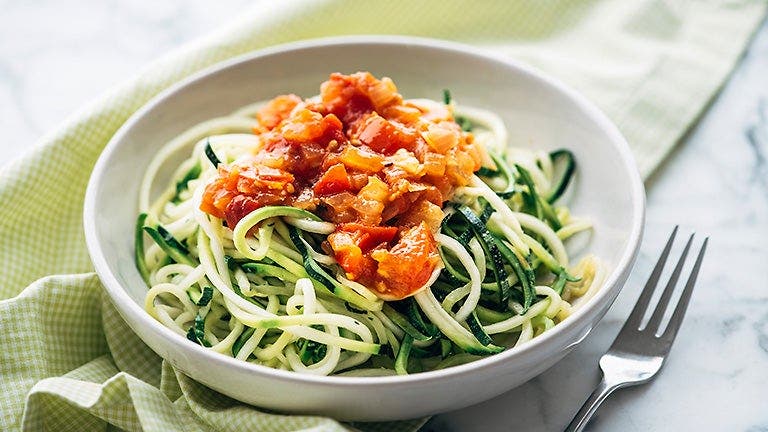Whole30: What is it, and does it work?


It seems like every week a new diet makes its way into the public discourse. Founded in 2009 by Melissa Hartwig Urban, Whole30 is one of those programs. The elimination diet is similar to the Paleo diet except that it’s designed to be followed for just 30 days as its name suggests.
During that time, people cut out an extensive list of foods, including both natural and artificial added sugars, alcohol, grains, dairy, and more. And although this is a weight-loss diet, throughout the month, participants are encouraged to avoid stepping on the scale.
If you’re wondering why on Earth anyone would follow such a restrictive eating plan, here’s your answer: According to the program’s website, following Whole30 improves energy, sleep, allergies, anxiety, chronic pain, digestive issues, and skin conditions while assisting with weight loss—all claims based on one 2016 survey of 7,700 Whole30 alumni. Additionally, the program pledges to “reset” your relationship with food in just 30 days. But does it really work?
I. What is Whole30? A comprehensive guide
II. Foods to eat on the Whole30 diet
III. Foods to avoid on the Whole30 diet
IV. Potential health benefits of Whole30
V. Potential side effects and health risks of Whole30
VI. Other disadvantages of Whole30
VII. The upshot: Does the Whole30 diet work?
What is Whole30? A comprehensive guide
In short, the program’s manifesto suggests certain elements of your diet may be inhibiting your health. Eliminating them for 30 days, it says, can help reset your emotional and physical relationships with food.
Foods to eat on the Whole30 diet
Here are the foods that you’re permitted to consume on Whole30, which emphasizes whole foods:
- Meat
- Fish
- Seafood
- Eggs
- Vegetables
- Fruit
- Nuts
- Black coffee
- Tea
- Ghee
- Some legumes like green beans and snow peas
- Fruit juice
Foods to avoid on the Whole30 diet
Although the list above may seem like plenty to eat, the list of what you cannot eat on Whole30 is far more extensive.
All grains, such as rice, wheat, oats and barley
Anything that might even resemble a grain is eliminated entirely on the Whole30 diet—even though most health experts agree that whole grains are beneficial. After all, they supply your body with carbohydrates, protein, fiber, and antioxidants. What’s more, there appears to be a link between eating wholegrains and reduced risk of major lifestyle diseases like cardiovascular disease, and type 2 diabetes, as well as certain cancers.
Legumes, such as beans, lentils, peanuts, and peas
Beans and legumes (think: lentils, peanuts, peas, chickpeas) are outlawed on Whole30 because they contain high levels of phytates, which can allegedly block the use of certain nutrients by our bodies, according to the diet’s creators.
However, many health experts agree that legumes are key to maintaining a healthy diet, in part because they are rich in protein and fiber: “This diet restricts some of the most nutritious and satiating foods,” says Dr. David Katz, M.D., founding director of Yale University’s Yale-Griffin Prevention Research Center. “That makes no sense at all.”
Dairy products
No cow, goat, or sheep milk products, including milk, cream, cheese, kefir, yogurt, sour cream, ice cream, and frozen yogurt, are permitted on Whole30. (Yes, that means thirty days of black coffee, unless you’re OK with using dairy-free options.)
Meanwhile, many experts agree that dairy products may actually support weight loss and improvements in body composition, according to the National Institutes of Health (NIH). What’s more, the USDA recommends fat-free or low-fat dairy including milk, yogurt, cheese, and fortified soy beverages as part of a healthy eating pattern.
Sugar and other natural sweeteners
On Whole30, adherents must cut out all sweeteners including maple syrup, honey, agave nectar, coconut sugar, date syrup, monk fruit extract, and stevia. However, followers are permitted to use fruit juice as a sweetener.
Soy products
The diet forbids the consumption of soy products, which can be valuable sources of high-quality protein and healthy fats. Outlawed foods in this category include soy sauce, miso, tofu, tempeh, edamame, and soy lecithin.
Highly-processed foods in general
Highly-processed foods are also banned from Whole30—in addition to baked goods and anything you might consider a junk food or treat.
While the connection between highly-processed foods, which are likely to be overeaten, and weight gain is fairly clear, completely eliminating affordable convenience foods may not be feasible for everyone, according to the NIH.
Artificial sweeteners
Next on the list of foods to avoid: artificial sweeteners like Splenda, Equal, Nutrasweet, and xylitol. These additives add virtually no calories to your diet nor do they raise blood sugar levels, which is why they can help create a calorie deficit that may contribute to weight-loss. On Whole30, though, they’re entirely banned.
Alcohol
Alcohol of any kind (including varieties used in cooking) is also a no-no on Whole30. That’s because following the program requires complete focus and making specific food choices—two things that become more difficult under the influence of alcohol.
That said, research suggests that a glass of wine or beer here and there might not be all that bad for you: There may be links between regular light-to-moderate alcohol consumption and reductions in heart-failure, stroke, dementia, and diabetes risks, although more research is needed, and few doctors would recommend adding alcohol to the diet in the name of health.
Certain additives, such as carrageenan, MSG, and sulfites
Many experts agree that avoiding additives like carrageenan, MSG, and sulfites, which are banned on the Whole30 diet, could be beneficial—particularly MSG. That’s because the ingredient, which is used to flavor foods, has been linked to obesity, metabolic disorders, neurotoxicity, and detrimental effects on the reproductive organs, according to the NIH. Meanwhile, sulfites, which may be added to wines, canned produce, and other foods for its preservative properties, may cause negative digestive and abdominal reactions among people who are sensitive to it.
Mock or imitation foods
Hacking together indulgent dishes using Whole30-approved ingredients is forbidden: While on the diet, you can’t recreate or buy mock-foods—meaning no cauliflower pizza or brownies made with fruit and nuts. Even if the ingredients are technically compliant, Whole30’s manifesto suggests this sort of creativity clouds the diet’s purpose and could interfere with results.
Potential health benefits of Whole30
The program may have some payoffs: According to one diet conducted by the diet’s makers, following Whole30 may contribute to clear skin, steady energy levels, deep sleeps, and some weight/bloat loss, says registered dietitian nutritionist Lauren Minchen, founder of the eponymous nutrition practice.
Minchen, who has counseled clients on the Whole30 diet and observed the outcomes, says that the Whole30 can help you achieve an optimal intake of macronutrients (i.e., carbs, fat, and protein) as well as micronutrients (i.e., vitamins and minerals) without defaulting to “empty filler foods,” or processed options. “It's a great way to learn about what you crave and how much sugar and white flour you're consuming,” she says.
However, research into the potential health benefits of the program are fairly minimal as of yet; most of the evidence of effectiveness is anecdotal. No high-quality, peer-reviewed studies have been conducted on the Whole30 diet itself.
Potential side effects and health risks of Whole30
Because Whole30 calls for a pretty radical shift in the average diet, it should come as no surprise that the side effects can be fairly intense. According to the program’s website, people following the program might experience:
- Dull headaches
- Lethargy
- Sleepiness
- Crankiness
- Brain fog
- Cravings
- General malaise
- Skin breakouts
- Mild digestive issues (bloating, irregularity)
Because there are no large-scale interventional studies conducted by independent academics, the long-term health effects of Whole30 are unknown.
Other disadvantages of Whole30
So while Whole30 might work for quick weight loss, results could be difficult to maintain—one reason why Dr. Katz believes the disadvantages of the program highly outweigh the advantages. “Like every other go-on-a-diet approach to eating well, this is a short-term solution to the permanent challenge of eating well and managing weight,” he says. “The diet and the weight loss are very, very unlikely to last.”
What’s more, demonizing prominent food groups could negatively impact a Whole30 follower's relationship with foods that are widely considered healthy. “Some of the foods that contribute the most to both health and appetite control—foods [found] in the diets of the world’s healthiest, leanest, longest-living people—are restricted,” Dr. Katz says.
The Upshot: Does Whole30 Work?
Experts disagree on whether Whole30 “works” because effectiveness depends on the purpose.
For short-term weight-loss, you may see results. “People lose weight while following the rules,” Dr. Katz says. But Whole30 isn’t designed to be continued for the rest of your life. By definition, it is a short-term solution.
“When people stop following the rules, they gain the weight back—with interest,” Dr. Katz says. The problem lies therein.
That said, it’s no secret that weight loss is just one measure of whether a diet “works.” Even when weight loss is the goal, your diet should contribute to your overall wellness, which includes establishing healthy habits that are actually sustainable.
It’s why applying some of Whole30’s techniques—like eating a diet that’s rich in whole foods—to a more balanced, sustainable, science-backed program like WeightWatchers® could be a better bet in the long run.
Lucy Shanker is a New York City-based writer. A graduate of the University of Missouri School of Journalism, her work has appeared in The Independent, Consequence of Sound, Spindle Magazine, Vox Magazine, and more.
--
This article was reviewed for accuracy in June 2021 by Angela Goscilo, MS, RD, CDN, Nutrition Manager. The WW Science Team is a dedicated group of experts who ensure all our solutions are rooted in the best possible research.
Related articles
The ketogenic diet: What is keto, and does it work?
